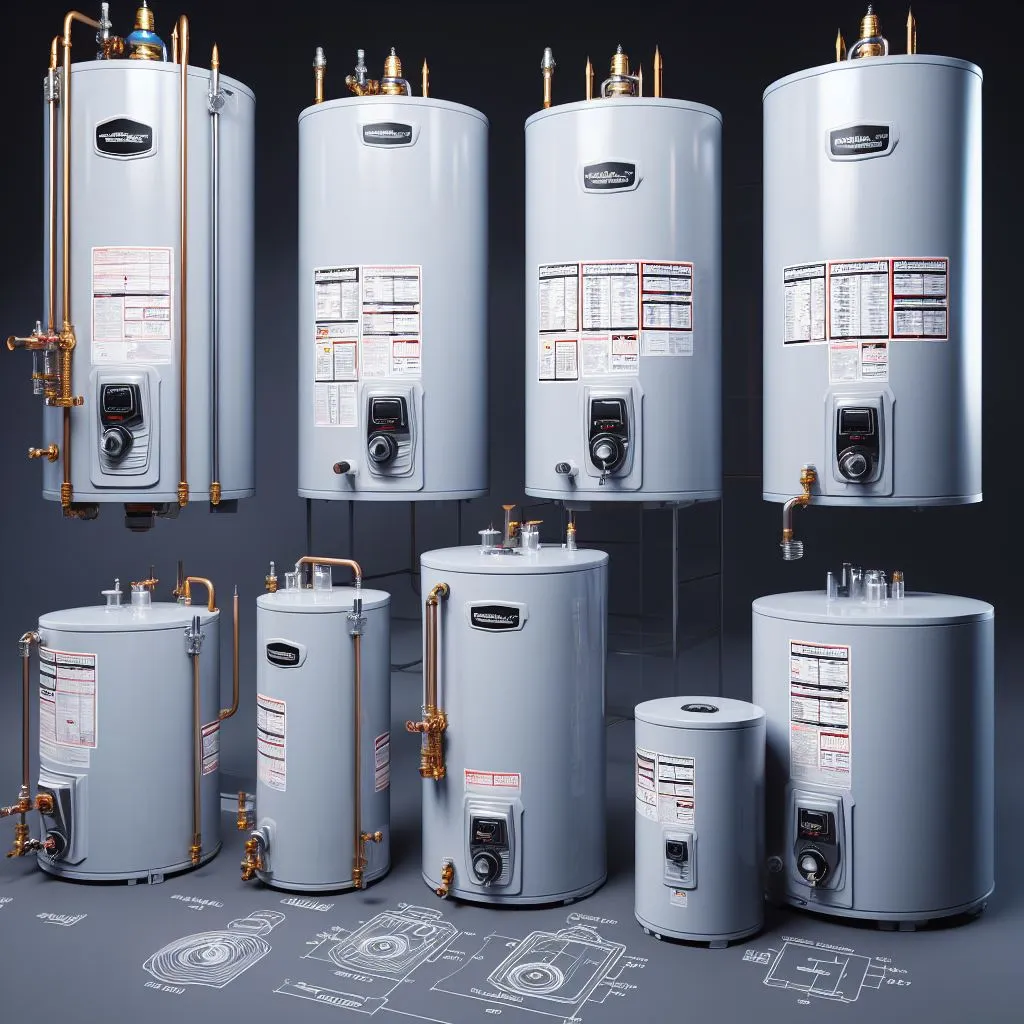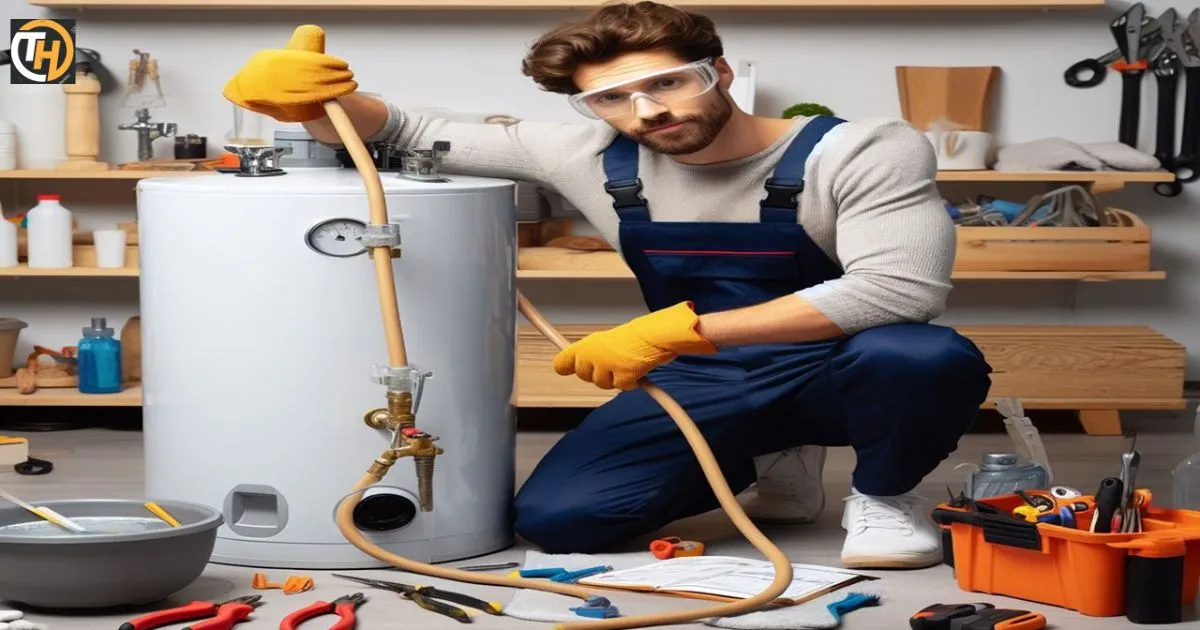Filling your water heater is a routine but essential task to ensure a steady supply of hot water in your home. But have you ever wondered, “How long does it take to fill a water heater?” In this comprehensive guide, we’ll explore the factors that influence the filling time, ways to estimate it, and how to expedite the process.
Have you ever turned on the hot water tap and wondered, “How long does it take to fill a water heater?” Understanding the filling time of your water heater is essential for maintaining a consistent supply of hot water in your home.
In this article, we will delve into the various factors that influence the time it takes to fill a water heater. Whether you have a traditional storage-tank water heater or a tankless one, we’ll provide insights on the filling process, its variables, and ways to optimize it. Let’s explore the intricacies of this crucial element of your water heating system.
Understanding Water Heater Filling Time
Filling a water heater is the process of refilling it with water after it has been used. The time it takes to complete this process depends on several variables, and it’s essential to consider these factors for an efficient and effective water heating system.
Factors Influencing Filling Time
The time it takes to fill a water heater can be influenced by several key factors:
Water Heater Size

One of the most crucial factors determining filling time is the size of your water heater. The water heater’s storage capacity directly affects how long it takes to fill. Larger water heaters, with their greater storage volume, generally require more time to fill compared to smaller units.
This is because they need to accumulate a more substantial amount of water before they are considered “full.” So, if you have a capacious water heater, be prepared for a slightly longer filling time.
Water Pressure
The water pressure in your plumbing system plays a vital role in the speed of the filling process. Higher water pressure from your supply source can expedite the filling process, allowing the tank to reach capacity more quickly. Conversely, lower water pressure can significantly increase the time it takes to fill the tank.
While you may not have control over the water pressure from your supply source, you can install a booster pump to increase it, ensuring a faster filling time.
Inlet Temperature
The initial temperature of the water entering your water heater can affect filling time. Cold water entering the heater’s tank will naturally need more time to heat up to the desired temperature, especially when using a traditional storage-tank water heater. During colder months or in regions with lower groundwater temperatures, the filling process may take slightly longer.
This is because the water heater must work harder to bring the water to the set temperature.
Estimating Filling Time
The actual time required to fill a water heater can vary widely based on the factors mentioned above. On average, it can take anywhere from 30 minutes to a few hours to fill a standard water heater. However, it’s essential to monitor the process and adjust your expectations accordingly.
Understanding these variables can help you prepare for the time it takes to have hot water readily available.
Ways to Expedite Filling
While some factors that affect filling time are beyond your control, there are practical ways to expedite the process:
Boost Water Pressure
Boosting Water Pressure If you’re looking to expedite the water heater filling process, especially with larger units, one effective solution is to install a booster pump. Booster pumps are designed to increase water pressure in your plumbing system, ensuring a more efficient and rapid filling of your water heater.
A booster pump works by drawing water from your supply source and boosting its pressure before it enters the water heater. This increase in pressure allows the tank to fill more quickly, reducing the overall time it takes to reach the desired water level. Booster pumps come in various sizes and capacities, so you can choose one that best suits your water heater’s size and your specific requirements.
Installing a booster pump is a proactive approach to managing filling time and ensuring that your water heater is ready to provide hot water whenever you need it. It’s particularly beneficial if you have a high-capacity water heater or experience low water pressure issues in your area.
Pipe Insulation
Enhancing Efficiency with Pipe Insulation One effective method to expedite the water heater filling process and improve the overall efficiency of your hot water system is by insulating your plumbing pipes. Proper insulation helps minimize heat loss and ensures that hot water reaches its destination more quickly.
Here’s how it works
when hot water leaves your water heater and travels through uninsulated pipes, it can lose heat along the way. This heat loss results in longer wait times for hot water at your fixtures, such as sinks, showers, and appliances. By insulating your pipes, you create a barrier that prevents this heat loss, allowing hot water to maintain its temperature as it travels through the plumbing system.
Pipe insulation is typically made of foam or fiberglass and is designed to wrap around your plumbing pipes securely. It acts as a thermal barrier, keeping the heat inside the pipes and preventing the surrounding air from cooling the water. As a result, you can expect hot water to reach its destination more quickly, reducing the wait time and conserving energy.
Insulating your plumbing pipes is a cost-effective and simple solution that pays off in terms of convenience and energy savings. It’s particularly beneficial if your water heater is located far from the fixtures it serves or if you have a large home with an extensive plumbing network.
To get the most out of pipe insulation, make sure it’s installed correctly and covers all the hot water pipes in your system. Additionally, consult with a professional plumber to ensure that your water heater is functioning optimally and that all components are in good condition. This proactive approach will help you enjoy faster hot water delivery and increased energy efficiency in your home.
In summary, insulating your plumbing pipes is an efficient way to enhance the speed at which hot water reaches its destination. By reducing heat loss, you can enjoy the convenience of quick and consistent hot water flow throughout your home.
Choose a Tankless Water Heater
If you’re looking for an almost instant supply of hot water, consider switching to a tankless water heater. These heaters don’t require a storage tank and heat water on-demand, providing you with hot water whenever you need it.
Understanding these factors and considering these solutions can help you make the most of your water heater while minimizing the inconvenience of waiting for hot water.
Here’s a table summarizing the key points of the article:
| Factors Influencing Filling Time | Estimating Filling Time | Ways to Expedite Filling |
| Water Heater Size | 30 minutes to a few hours | 1. Boost Water Pressure |
| Water Pressure | Varies depending on factors | 2. Pipe Insulation |
| Inlet Temperature | Monitor the process | 3. Choose a Tankless Water Heater |
This table provides a quick overview of the factors affecting water heater filling time, how to estimate the filling time, and practical ways to expedite the process.
FAQs
Why is my water heater taking so long to fill up?
If your water heater is taking longer to fill, it may be due to factors like the heater’s size, water pressure, or the inlet water temperature.
Can I install pipe insulation myself?
Yes, pipe insulation is a DIY-friendly project that can be easily installed using pre-slit foam or fiberglass sleeves.
How can I boost the water pressure in my plumbing system?
You can increase water pressure by installing a booster pump, which enhances the flow of water to your fixtures.
Will insulating my plumbing pipes save me money on energy bills?
Yes, pipe insulation helps conserve heat, reducing heat loss and energy consumption, which can lead to cost savings.
Does pipe insulation work for both hot and cold water pipes?
Pipe insulation is beneficial for both hot and cold water pipes, helping maintain temperature and conserve energy.
Conclusion
The time it takes to fill a water heater can vary based on several key factors, including the heater’s size, water pressure, and inlet temperature. Understanding these factors can help you manage your expectations. Additionally, there are ways to expedite the filling process, such as installing a booster pump or insulating your plumbing pipes. By taking control of these variables, you can optimize the time it takes to enjoy hot water, making your daily routines more efficient and convenient.
It’s important to remember that while these tips can help improve filling time, regular maintenance of your water heater is essential. Keeping the tank clean and well-maintained ensures its efficiency and longevity, providing you with reliable hot water whenever you need it.











